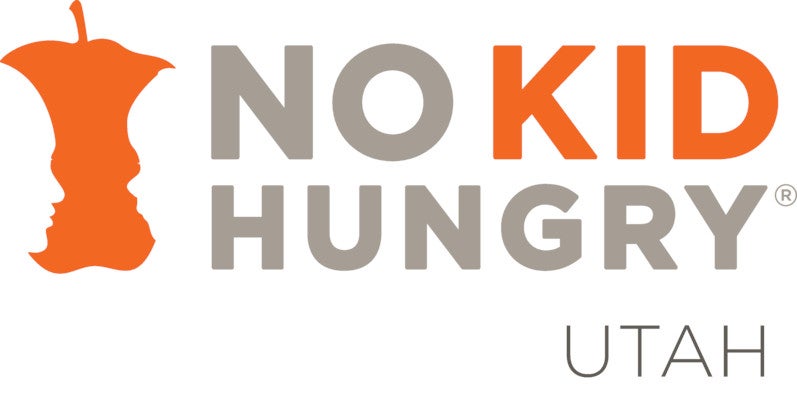Educators know that students that are hungry for food cannot be hungry for knowledge. Many students across the country miss a morning meal at school because of when and how it is served. In schools where breakfast is offered in the cafeteria before the school day begins, students often miss out on a morning meal school because of barriers such as parents and busses dropping students off too late, students not knowing about school breakfast, students choosing to socialize with friends, or stigma around school breakfast.
There is a sustainable solution. Schools that incorporate breakfast into the school day with Breakfast After the Bell models like Grab and Go to the Classroom, Breakfast In the Classroom, and Second Chance Breakfast, are able to provide more kids with the healthy food they need to learn. As a result, students demonstrate improved academic outcomes and attendance, and decreased school nurse visits and behavioral disruptions. Schools across the country make lunch a part of the school day, and breakfast should be part of it too!
What is the National School Breakfast Program?
The National School Breakfast Program is a federal school nutrition program, just like school lunch. The U.S. Department of Agriculture (USDA) administers the School Breakfast Program at the federal level, state education agencies administer the program at the state level, and local school food authorities, like a school district’s Food and Nutrition Services department, operate the program in schools. All students can participate in breakfast that schools serve. Meals are made affordable for all students through subsidies and reimbursements provided by the federal government.
Who pays for the National School Breakfast Program?
School nutrition programs are self-supporting. School breakfast expenses are not part of the school system’s education budget. USDA reimburses school districts monthly to cover the cost of food, preparation and serving of foods and beverages, and food service employee wages. USDA uses information about a student’s family income and a school district’s geography and need to determine the rate each child pays for school meals. Children may be determined as eligible for free or reduced price meals through participation in certain Federal Assistance Programs, based on their family’s household income and size, or by meeting other federal requirements [USDA, 2017]. During the 2017- 2018 school year, reimbursement rates range from $0.30-$2.43 per school breakfast. All meals that follow meal guidelines, including nutrition standards, are eligible for reimbursement, even for students who do not qualify for free and reduced price lunches. [Food & Nutrition Service, USDA, 2017]
Why should students eat school meals?
Maslow before Bloom! Educators know that addressing students’ basic needs is a precursor to students’ learning. That knowledge is likely why so many teachers pay for and provide food for their students on a regular basis. Access to food and feeling secure are crucial to students’ academic success. Access to food is as key a need as safety and security. Children who worry about where they will find their next meal cannot focus on learning or effectively manage emotions and maintain relationship with their teachers and peers. Incorporating breakfast into the school day is a solution to teachers providing food for students out of their own budget.
Access to school breakfast is an equity issue. Ensuring that all kids start the day with the nutrition and fuel they need to focus and learn is a right that should be guaranteed to all students. When all students have the opportunity to access a nutritious meal in school, schools remove one of the obstacles to students’ learning—hunger. Providing access to school breakfast is providing access to an educational resource crucial to students reaching their full potential.
Eating School Breakfast is connected to education outcomes. Making school breakfast a seamless part of the school day by serving it after the bell can also have a huge impact on classrooms. From increasing test scores, to calmer classrooms and better attendance and graduation rates, school meals are linked to students’ abilities to learn. The health benefits are also clear, with fewer nurse visits, better health, and lower rates of obesity among children who have access to school breakfast. [Deloitte & No Kid Hungry, 2015]
Are these meals healthy?
Schools that participate in the National School Breakfast Program must adhere to nutrition guidelines supported by science and provided by USDA. Even though food items offered to students at school sometimes look the same as breakfast foods found in grocery stores, convenience stores or fast food restaurants, school breakfast items often include whole grains and less sugar, sodium, fat, and calories.
For example, breakfast grains at school are whole grain rich, low in sugar and packed with vitamins and minerals; juices are 100% fruit/vegetables, and fruits and vegetables are fresh or frozen. If canned fruit is served, it is packed in light — not heavy — syrup, water or fruit juice; calorie levels have an age appropriate minimum and maximum; saturated fat is less than 10% of total calories; and breakfast is low in sodium.
Why don’t more students eat school breakfast?
Traditional school breakfast programs often operate too early for students to participate, particularly if bus or carpool schedules do not allow them to get there on time. Other students end up skipping breakfast because they do not want to be singled out as poor or lose out on time socializing with their friends. Breakfast after the Bell models, that make breakfast part of the school day, can be a solution to these barriers.
How can my school make breakfast part of the school day?
There are many ways to make breakfast part of the school day with Breakfast After the Bell. Three Breakfast After the Bell models that demonstrate the most success are Breakfast In the Classroom, Grab and Go to the Classroom, and Second Chance Breakfast. The key to each of these models is that breakfast is served during the school day, after the instructional bell, in a place where students are together.
Breakfast in the Classroom: Students eat breakfast in their classroom after the official start of the school day. Students or staff may deliver breakfasts to classrooms from the cafeteria via coolers or insulated rolling bags, or school nutrition staff can serve breakfast from mobile carts in the hallways. Breakfast in the Classroom takes 15 minutes on average. When schools serve Breakfast in the Classroom as part of the school day an average of 88% of students eat breakfast compared with only 50% when breakfast is served in the cafeteria before school.
Grab and Go to the Classroom: Students pick up conveniently packaged breakfasts from mobile service carts in high traffic areas, such as hallways, entryways or cafeterias. Students can eat in the classroom another common area after the bell has rung. Grab and Go is most effective when carts are stationed in locations convenient to students (e.g. near school entrances) and when students are able to eat the food they pick up from the carts in the classroom. When schools implement a Grab and Go Breakfast to the Classroom model as part of the school day an average of 64% of students eat breakfast compared with only 50% when breakfast is served in the cafeteria before school.
Second Chance Breakfast: Students eat breakfast during a break or passing time in the morning, often after first period or midway between breakfast and lunch. Schools can serve breakfast in the same manner as they would with traditional Grab and Go breakfast. This model can be particularly effective for older students who may not be hungry first thing in the morning or may opt to hang out with friends. When schools implement a Second Chance Breakfast model as part of the school day an average of 70% of students eat breakfast compared with only 50% when breakfast is served in the cafeteria before school.
My school already provides breakfast free of charge to all students. Why should we consider Breakfast After the Bell?
Many school already provide school breakfast to all students, free of charge, which is a wonderful start! However, barriers to accessing school breakfast other than cost still exist with traditional breakfast served in the cafeteria before the school day begins. Challenges like bus and parent drop off time, not enough time for kids to eat in the cafeteria, and size or location of the cafeteria are mitigated by ensuring that all students have the ability to eat Breakfast After the Bell with their peers as part of the school day.
My school population includes a small percentage of free and reduced eligible students. Why should we consider serving Breakfast After the Bell?
Economic status, reported in free and reduced price eligibility paperwork, is not always a clear indicator of whether a child receives breakfast at home or elsewhere before the school day begins. Students from all economic backgrounds report that they miss breakfast influencing their ability to learn. School breakfast provides an opportunity for all students to start the day nourished and ready to learn. Additionally, even if a school includes a small percentage of students identified as free and reduced eligible, that is still a percentage of students in your school that may depend on school to access food regularly.
How can I help students access School Breakfast?
There are many ways you can help! Educators should be involved as much as possible in the planning, roll out, and implementation of Breakfast After the Bell to make sure it works best for your students, your classroom, and your school. In fact, educators can lead the charge in moving to Breakfast After the Bell. Here are a few ways to get started:
Talk to cafeteria and nutrition staff: Ask them how your school serves breakfast, and if there are Breakfast After the Bell models your schools could try. Learn more from them about nutrition guidelines for breakfast.
Raise concerns with your school principal: Talk to your principal about the importance of school breakfast, any barriers you see to students accessing the meal, and talk through ways to troubleshoot.
Volunteer to start a pilot in your classroom: With the support of your cafeteria and custodial staff, and other education administrators, ask to start a Breakfast After the Bell pilot in your classroom. A small pilot can show the success of Breakfast After the Bell models and work out any kinks in real time.
Encourage kids to eat breakfast: Sometimes something as simple as asking a student if they ate breakfast is enough to get them to start. Encourage your kids to begin the morning with a nutritious meal to kick-start their day. Eating breakfast with your students can be a wonderful way to add positivity to the morning breakfast routine in your classroom.
Share observations: Talk about impact of Breakfast After the Bell with others in your school to generate buzz about the new breakfast model and create change. Talk to other education and school nutrition stakeholders in your district, to share best practices and get feedback. Invite others to get involved by visiting your classroom to see your pilot, start a pilot of their own, or elevate their voice for Breakfast After the Bell.
Encourage parents: Share the positive connection between eating school breakfast and students’ academic outcomes with parents. Educate parents about the nutrition value of school meals and encourage that their students should eat school breakfast. Make sure parents understand and return free and reduced eligibility paperwork.
Reach out to No Kid Hungry: No Kid Hungry works with school administrators and staff to help them identify and customize the school breakfast model that works best for their school. No Kid Hungry helps bring together school stakeholders, including teachers, food and building services staff, and parents, to design the ideal program and make sure that schools have the funding, equipment and marketing resources they need in order to make these Breakfast After the Bell models work.


